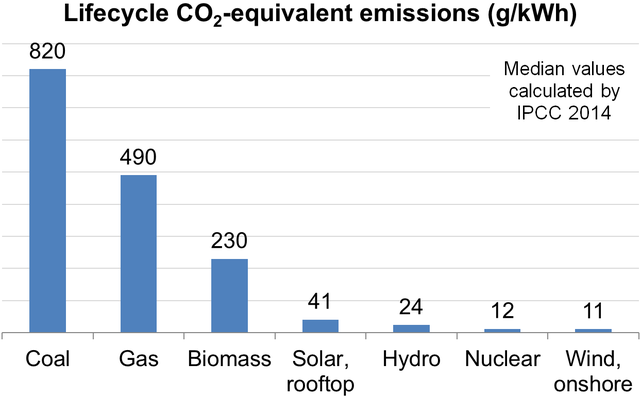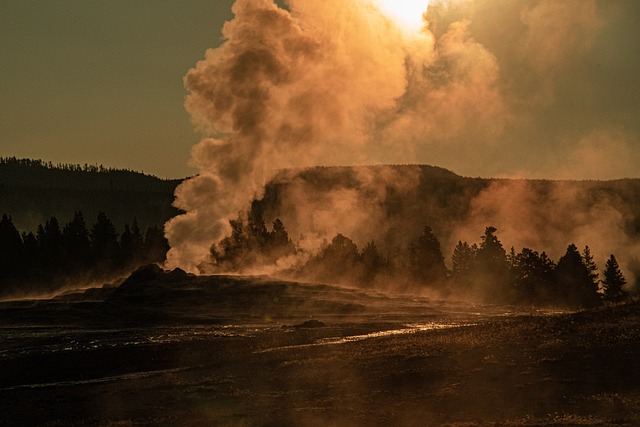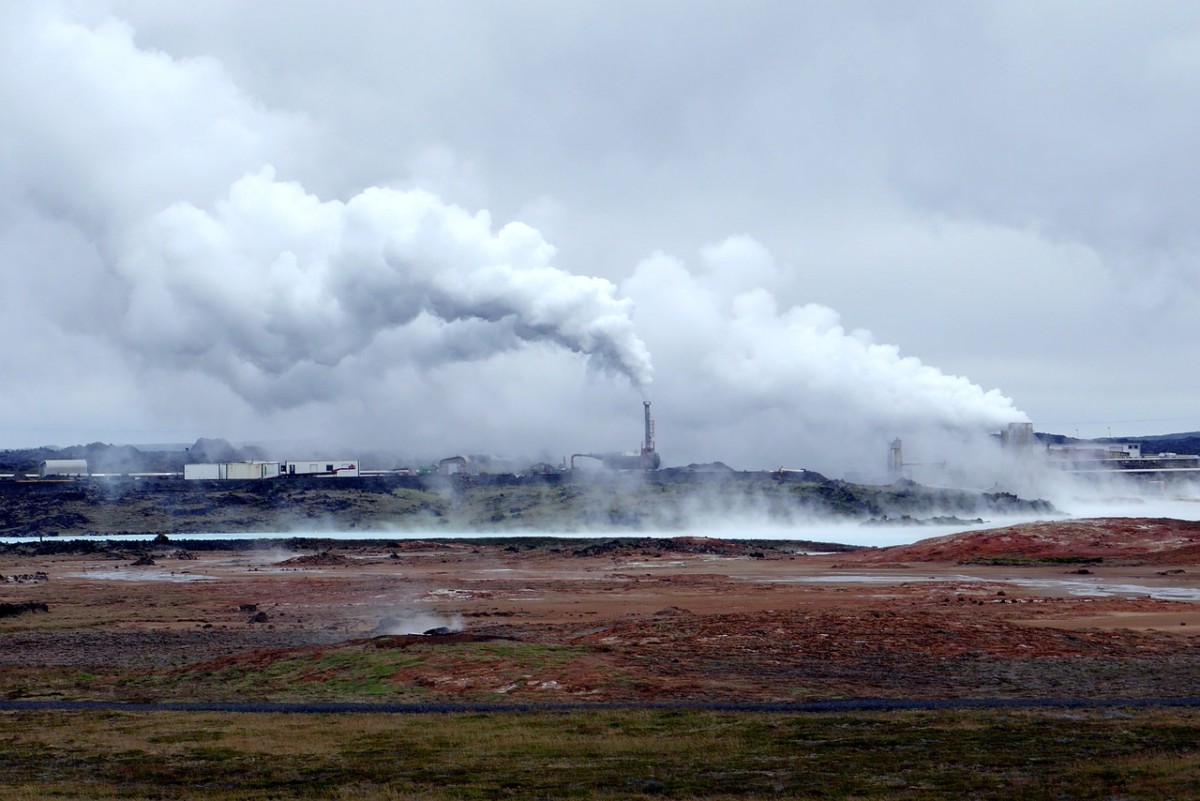Does Geothermal Energy Produce Greenhouse Gases
Geothermal energy is a renewable, sustainable form of energy that has been used for centuries to provide heat and electricity. It is a clean energy source that does not emit pollutants or greenhouse gases in the process of producing power. As climate change continues to be a major concern, understanding whether geothermal energy contributes to the production of greenhouse gases is critical. This article aims to answer the question: Does geothermal energy produce greenhouse gases?
How is Geothermal Energy Defined
Geothermal energy has been a long-time renewable resource for power production. It is a form of energy that harnesses the heat from deep within the earth and uses it to generate electricity.
In today’s world, geothermal energy is seen as a sustainable way to produce electricity and can be used in both industrial and residential applications. But what exactly is geothermal energy?
Geothermal energy can be defined as heat generated by the Earth’s interior, which can be harnessed and used for various purposes such as heating homes or producing electricity.
It originates from the radioactive decay of elements deep inside the Earth’s core and moves toward the surface in the form of magma chambers.
Geothermal power plants use this natural heat source to turn turbines that then generate electrical power.
What Are Geothermal Reservoirs
Geothermal energy is one of the most sustainable and efficient sources of renewable energy available, but there are still questions about its environmental impact.
One of the biggest concerns surrounding geothermal reservoirs is whether or not they produce greenhouse gases. To answer this question, it’s important to understand what geothermal reservoirs are and how they work.
A geothermal reservoir is a region beneath the earth’s surface that contains hot water and steam, which can be tapped as an energy source through wells drilled into the ground.
The heat from these reservoirs is usually created by underground magma chambers or areas where tectonic plates meet at fault lines, resulting in extreme temperatures beneath the surface.
The hot water or steam from these sites can then be used to power turbines, generating electricity for homes and businesses with minimal impact on the environment.
What Types of Geothermal Power Plants Are There

Geothermal energy is becoming increasingly popular as an alternative energy source due to its low environmental impact and cost-effectiveness.
This form of renewable energy harnesses the heat from beneath the Earth’s surface to generate electricity, making it a clean and efficient way to produce power without releasing greenhouse gases into the atmosphere.
However, many people are unaware of the different types of geothermal plants that exist.
The most common type of geothermal plant is a dry steam plant, which uses steam from underground reservoirs to drive turbines that generate electricity.
Hot water plants use hot groundwater instead, while binary cycle plants employ both hot water and steam in combination with a secondary fluid such as ammonia or isobutane to increase efficiency.
Binary cycle power plants are an increasingly popular form of geothermal energy production. This form of renewable energy creates electricity by using the earth’s heat, which is stored as thermal energy.
It works by using two different fluids that have very different boiling points; one fluid with a low boiling point and another with a much higher boiling point.
Both of these fluids circulate through pipes deep in the ground, where they gain thermal energy from the earth’s heat before moving to a turbine above ground.
The turbine then converts this thermal energy into electricity for use in homes and businesses.
In comparison to other forms of geothermal power, binary cycle power plants are more efficient and cost-effective ways to produce electricity from underground sources.
What Gases Does Geothermal Energy Produce
Geothermal energy is a renewable energy source that has been used for centuries as a heat source. But does geothermal energy produce greenhouse gases?
While it does not emit significant amounts of carbon dioxide, other gases can be released during the production of geothermal energy.
When water and hot rocks deep in the Earth come into contact with each other, they form steam or hot water which is then used to power turbines and generate electricity.
However, when this process takes place, small amounts of hydrogen sulfide (H2S) can be released along with other gases like carbon dioxide and methane.
Some research suggests that some geothermal wells have higher levels of H2S than others.
The amount of gas emitted depends on how hot the temperature is below ground and how quickly pressure is built up inside the well.
Does Geothermal Energy Produce Greenhouse Gases
The Use of Nitrous Oxide in Geothermal Energy
Nitrous oxide is an important component of geothermal energy. It is used to generate heat and electricity that can be used in residential and commercial applications.
Recent research has shown that nitrous oxide emissions from geothermal sources are much lower than those from other forms of fossil fuels.
This makes it a viable alternative for those looking for a more sustainable form of energy production.
The use of nitrous oxide in geothermal facilities is becoming increasingly popular, as it not only reduces greenhouse gas emissions but also offers a reliable source of clean power with minimal environmental impact compared to traditional fossil fuels.
Additionally, the cost of using nitrous oxide is relatively low, making it attractive financially as well as environmentally friendly.
Furthermore, because the process does not generate any combustion products or residual gases and emissions are released directly into the atmosphere, there is no need for costly treatment processes or waste disposal systems.
Does Geothermal Energy Contribute to Greenhouse Emissions

The answer is both yes and no, as the production of this type of energy has both benefits and drawbacks.
When geothermal energy is used to generate electricity, it produces minimal amounts of greenhouse gases. This is because the majority of the energy comes from naturally-occurring heat sources within the earth’s crust.
While some carbon dioxide and other gases are released into the atmosphere during the process, these levels are much lower than those released by traditional methods of power generation such as coal or gas burning.
However, increased levels of greenhouse gas emissions can occur if geothermal plants are not managed properly.
Geothermal operations need to be carefully monitored to avoid any release of hydrogen sulfide or other pollutants that may be present in underground reservoirs.
What is the Carbon Footprint of Geothermal Energy
Geothermal energy is one of the renewable energy sources utilized in energy production that has been gaining traction in recent years for its sustainability and clean emissions.
To reduce the world’s carbon emissions footprint, many countries are now turning to geothermal power plants as an alternative to fossil fuel-based electricity.
But what is the carbon footprint of geothermal energy, and how does it compare with other forms of power generation?
This PDF explores the question in detail and discusses whether or not geothermal energy produces greenhouse gases, it,s a must-read.
The primary benefit of using geothermal energy lies in its low emissions profile; most modern plants produce only trace amounts of greenhouse gases such as CO2 during their operation.
This makes them one of the cleanest sources of electricity available today and thus can have a minimal impact on global warming if used correctly.
What Role Does Geothermal Energy Play in Combating Climate Change

Geothermal energy has been touted as a potential solution for combating climate change. But does geothermal energy produce greenhouse gases?
Geothermal plants use heat from deep within the earth to generate electricity, which is seen by many experts as an efficient and renewable form of energy.
Unlike other forms of energy production such as coal, natural gas, or oil, a geothermal plant produces virtually no greenhouse gases when generating electricity.
Geothermal power plants emit 97% less acid rain-causing sulfur compounds and about 99% less carbon dioxide than fossil fuel power plants of similar size as stated by the EIA.
Instead, it can provide reliable baseload power with low emissions intensity levels that are comparable to renewables such as wind and solar.
Furthermore, by replacing traditional forms of electricity generation with geothermal power, overall carbon dioxide emissions can be reduced significantly over time.
How Does Geothermal Energy Affect The Environment
Geothermal energy is a type of renewable energy that is generated from the natural heat found beneath the Earth’s surface.
It has been proposed as an alternative to other sources of energy, such as fossil fuels and nuclear power, due to its potential to reduce greenhouse gas emissions. But how does geothermal energy affect the environment?
The good news is that geothermal plants are considered to be a clean, non-polluting source of electricity.
Unlike some forms of traditional electricity production, such as burning coal or oil, geothermal plants produce few air pollutants or carbon dioxide (CO2).
In fact, according to research conducted by Stanford University’s Precourt Institute for Energy Efficiency, the amount of CO2 emitted from geothermal plants is negligible compared to other forms of electricity production.
In addition, geothermal plants produce no harmful emissions such as nitrogen oxides or sulfur dioxide as they employ mechanical scrubbers to remove hydrogen sulfide.
Plus in many cases, the turbines and generators at geothermal plants generate more energy than is needed to power the plant.
How Environmentally Friendly Is Geothermal Energy
Geothermal energy is a renewable source of energy that has been used for centuries and is becoming more popular today as an environmentally friendly form of energy production.
From using geothermal heat pumps to power entire cities, this type of energy is seen as a sustainable option to traditional forms of energy production. But how environmentally friendly is geothermal energy?
The answer depends on the type of technology used. Geothermal heat pumps are considered to be carbon neutral since they do not release any emissions into the atmosphere.
However, when it comes to other technologies like Enhanced Geothermal Systems (EGS), things get complicated.
EGS involves drilling deep into the earth’s surface to reach hot rocks and injecting water at high pressure to produce steam which can be used for electricity generation.
This process could potentially lead to the release of greenhouse gases, including carbon dioxide and methane.
What Makes Geothermal Energy Green
Geothermal energy is a renewable source of energy that has been used for centuries to provide heat and electricity.
In recent years, geothermal energy has gained popularity as a green alternative to traditional sources of energy. But what makes geothermal power so green?
Geothermal power is one of the cleanest forms of renewable energy available today. Unlike fossil fuels, which release carbon dioxide into the atmosphere when burned, geothermal plants do not emit any harmful pollutants or greenhouse gases.
The Earth’s core maintains a consistent temperature which allows for low-cost extraction of thermal energy from underground reservoirs without releasing any emissions into the atmosphere.
This makes it an ideal choice for sustainable living and a great way to reduce your carbon footprint.
Geothermal plants do not require any fuel, so they can run 24 hours a day-7 days a week with no interruption.
This means that you will get power whenever you need it and never have to worry about maintenance or storage of fuel.
What are the Pros and Cons of Geothermal Energy
Pros:
- Geothermal energy is renewable and sustainable.
- It requires minimal land disturbance and has a low environmental impact.
- Generates electricity 24 hours a day with high reliability.
- Geothermal plants have relatively low operating costs compared to other forms of energy production.
- Geothermal energy provides economic development benefits to the local community where it’s located.
Cons:
- High capital costs for building geothermal power plants can be prohibitively expensive for some countries or regions without sufficient financial resources or access to capital markets.
- Limited availability of suitable sites for geothermal power plants, as geological conditions, must be just right for a plant to be feasible and economically viable at the same time.
- Possible surface disturbances due to drilling operations can impact air quality, water resources, and local ecosystems if not done in an environmentally responsible manner.
- Some forms of geothermal power generation are not as readily available as other renewable sources of energy, such as solar and wind.
What Countries Use Geothermal Energy

Geothermal energy is widely used in a number of countries around the world, but some countries are more reliant on it than others.
Iceland, New Zealand, and The Philippines are all major users of geothermal energy and produce a significant proportion of their electricity from this source.
In Iceland alone, about 26% of their electricity comes from geothermal resources – making them one of the top producers worldwide!
El Salvador and Kenya also have large-scale projects that generate power from geothermal plants – with Kenya planning to bring up to 1000MW online by 2022.
The United States is another major user of geothermal energy, with over 70 power plants online producing about 4.4GW.
It is estimated that by 2050, the potential capacity for geothermal in the United States could be as high as 13,000MW!
Does Geothermal Energy Produce Greenhouse Gases
Let’s finish with 7 of the most FAQs answered
What are the environmental benefits of geothermal energy?
Geothermal energy is a form of renewable energy that uses heat from the Earth’s core to generate electricity. When compared to other forms of energy production, geothermal has many environmental benefits.
The biggest benefit of geothermal energy is the lack of air pollution it produces. Unlike other sources, like coal and natural gas, no pollutants are released into the atmosphere when generating power from geothermal sources.
This helps reduce greenhouse gases and can slow down climate change significantly. Furthermore, since no fuels are burned in order to generate electricity, there is also no risk of oil spills or gas leaks into the environment.
In addition, unlike solar energy, nuclear energy, and wind power which require large amounts of land for installation purposes, geothermal plants are typically much smaller in size and thus take up less space on land surfaces.
How does geothermal energy produce greenhouse gases?
Geothermal energy is an alternative energy source that can provide clean and renewable electricity. But does geothermal energy produce greenhouse gases?
Greenhouse gases are released naturally when heat from the Earth’s core escapes through volcanoes, hot springs, and other geological formations.
Geothermal plants use this natural process to generate electricity by accessing heated underground water or vapors, called “geofluids”.
As these fluids move through the power plant they can be converted into steam which then turns turbines connected to electric generators.
When done properly, most of the emissions generated by geothermal plants are carbon-neutral because they use preexisting sources of the heat already present in the environment.
What are the potential environmental and climate impacts of increasing geothermal energy production?
Geothermal energy is an increasingly popular form of renewable energy that has the potential to reduce dependence on fossil fuels, research suggests that while geothermal energy production can be a powerful clean energy source, there are some potential drawbacks.
The use of geothermal power plants may result in the release of some pollutants, such as carbon dioxide (CO2), hydrogen sulfide (H2S), and other toxic compounds.
The amount of these substances released depends on the type and efficiency of the power plant used.
Additionally, due to the heat exchange between hot reservoirs and cold aquifers during operation, there may also be changes in temperature in local surface water bodies.
This could potentially cause biological harm if it disrupts local ecosystems or species populations.
What are the greenhouse gas emissions associated with geothermal energy?
Geothermal energy has long been a popular choice for providing clean, renewable, and cost-effective electricity, but many are unaware of the greenhouse gas emissions associated with it.
Geothermal energy sources emit very low levels of carbon dioxide, making them one of the least polluting energy sources available today.
But there are other greenhouse gases produced when generating this form of power that could offset its environmental benefits.
The primary concern is hydrogen sulfide, which is released from geothermal wells during extraction.
Hydrogen sulfide is a powerful greenhouse gas that is estimated to be up to 300 times more impactful than carbon dioxide on global warming.
Additionally, geothermal plants may release small amounts of methane when using cooling systems such as warm water ponds or cooling towers; however, these emissions are generally much lower than those from combustion-based power plants like coal or natural gas facilities.
How does geothermal energy compare to other forms of energy?
Geothermal energy is a form of clean, renewable energy that is gaining more and more attention as the world looks for alternative sources of energy.
But what does this type of energy look like when compared to other forms?
Geothermal power plants use steam from naturally heated underground water reservoirs to generate electricity.
The process releases no carbon dioxide or other greenhouse gases, so it’s an environmentally friendly option compared to burning fossil fuels. It also offers a reliable source of energy, since the temperature below ground stays relatively consistent regardless of weather conditions aboveground.
On top of this, geothermal plants have low operation costs and don’t require any fuel to run since the heat source is always available.
What are the potential environmental benefits of geothermal energy?
Geothermal energy is a renewable energy source derived from the Earth’s heat. It offers an environmentally friendly alternative to traditional fossil fuels and has the potential to deliver significant environmental benefits.
The most appealing aspect of geothermal energy is that it does not produce greenhouse gases or other air pollutants like carbon dioxide (CO2) when generating electricity.
Geothermal plants extract thermal energy from the ground in order to generate electricity, producing minimal emissions compared to other forms of power generation.
Furthermore, extracting thermal energy from the ground requires little water compared to other forms of power generation such as coal or natural gas which need large amounts of water for cooling purposes.
Future projects for geothermal energy
Geothermal energy is one of the most promising forms of renewable energy available today, and its potential for reducing greenhouse gas emissions has been widely documented.
But what are some of the future projects being planned to further capitalize on this green resource?
In recent years, many countries have invested in geothermal-powered electricity generation and heating systems.
In the U.S., for example, a pilot project in Oregon is exploring ways to use cold water wells as an alternative to traditional methods for extracting heat from hot springs.
Meanwhile, Iceland has been leading the way in geothermal research by drilling deeper than ever before into the Earth’s crust and tapping into underground reservoirs of superheated steam.
Other projects underway around the world include exploring deep-seated or high-temperature resources for power generation and developing technologies that can convert low-grade geothermal resources into usable energy sources.
Recent Posts
Understanding Energy and Electricity: The Power For Progress
Energy and Electricity Energy and electricity are integral components of modern life, powering everything from homes and businesses to transportation and communication. Without them, the...
The Future of Wind Energy The future of wind energy is set to play a critical role in addressing global energy needs while combating climate change. As renewable energy sources like wind and...


